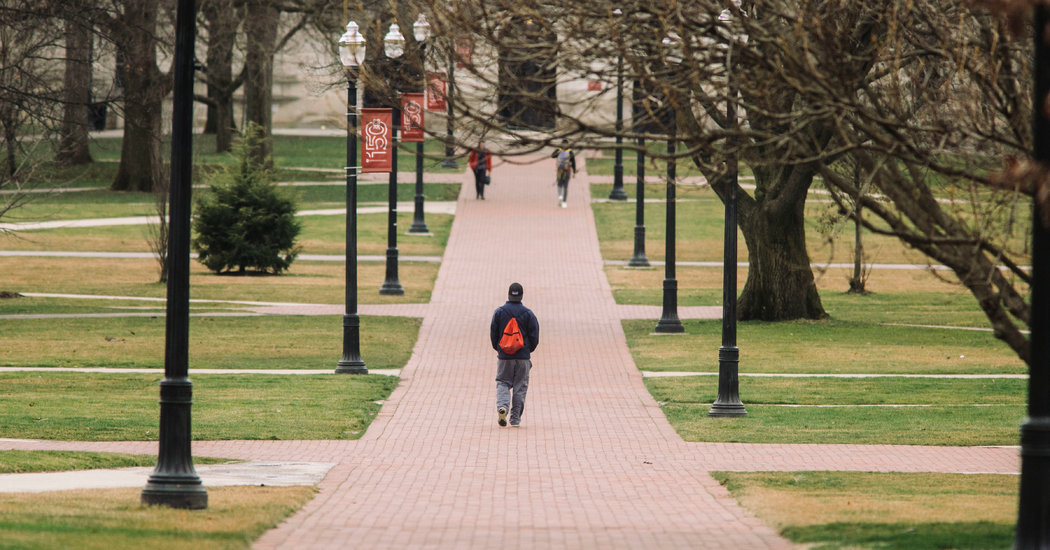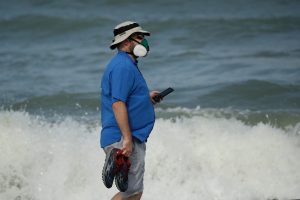Colleges and universities like ours are hoping to reopen campuses and resume in-person instruction in the fall, but they face significant physical and logistical obstacles in protecting their students. What can schools do to help ensure a virus-free return to campus?
Residential colleges are sometimes described as “landlocked cruise ships,” because students live, eat, study and socialize together, often in close quarters. Under ordinary circumstances, that is a good thing. But such tightly knit campus communities are tailor-made for spreading an easily transmissible illness like the coronavirus.
The American College Health Association and others have laid out a basic process for reopening: Test all students on arrival, then again after one to two weeks, and periodically throughout the semester (though where colleges will get all these tests and the personnel to administer them remains a mystery).
Isolate students who test positive, trace all close contacts and quarantine those exposed for two weeks. Maintain physical distancing protocols by reconfiguring residence halls, dining facilities, classrooms and other gathering places.
Require everyone to wear masks in public, insist on frequent hand-washing and good hygiene, disinfect high-touch spaces and surfaces regularly and restrict travel to and from campus. Identify adequate quarantine space, probably by reserving blocks of hotel rooms.
Doing all this is much easier said than done.
Reconfiguring physical spaces and controlling access to promote physical distancing will be complicated and costly. Achieving six feet of separation in classrooms, for example, may involve having half of the students attending in person on alternating days, while the other half joins remotely from residence halls.
Dining halls can have staggered shifts and expanded grab-and-go options. Schools can put limits on the number of tables, the number of students at each table and the number of diners at one time.
Ideally, in residence halls, every student would have a single with a private bathroom, but for most colleges that would require bringing only a fraction of their students back to campus. A more practical but less protective alternative is to treat students in doubles or suites as a family unit, allowing them to live together without physical distancing, just as family members do when sharing a home. Hallways can be marked for one-way traffic and occupancy limits established for common spaces. And all this doesn’t even begin to address sports.
The real danger, however, is that these efforts to maximize safety could be negated if students themselves do what comes naturally: gather. A report prepared for Connecticut’s governor notes with considerable understatement that “the much-publicized behavior of students during spring break in Florida suggests skepticism about full compliance with behavior norms.”
To keep students, faculty and staff safe on campus, colleges and universities will need to create and support a culture of respect for physical distancing — and students will need to be part of the effort.
There are a few important things that schools can do to accomplish this. First, students should be asked to sign a social contract promising to adhere to distancing and other rules as a condition for returning to campus. Just as many institutions rely on honor codes to limit academic misconduct, so too could they rely on social codes so students behave in ways that protect themselves and their classmates.
Second, students should be involved in the development of physical distancing protocols tailored to their campus and enlisted in educating one another about the importance of adhering to those protocols. Schools could, for example, encourage student research papers, videos, artwork and oral presentations on topics such as how the virus spreads, what renders different age and ethnic groups vulnerable to the virus, and how some countries have managed to contain the virus, and make the best of them available to the campus community.
Third, college officials should work with student organizations to design and fund social gatherings (preferably outdoors) that are both fun and safe.
Fourth, institutions should consider an initiative that encourages students to design, produce and wear masks that reveal something about who they are and what they value.
Whether students will abide by the protocols needed to keep campuses safe remains an open question. But few, if any, want to return to Zoom classes in their parents’ basement. With some advice and encouragement, the vast majority of them, we hope, will embrace a culture of physical distancing as their best — and only — alternative.
David Wippman is the president of Hamilton College. Glenn Altschuler is a professor of American studies at Cornell.
The Times is committed to publishing a diversity of letters to the editor. We’d like to hear what you think about this or any of our articles. Here are some tips. And here’s our email: [email protected].
Follow The New York Times Opinion section on Facebook, Twitter (@NYTopinion) and Instagram.



















